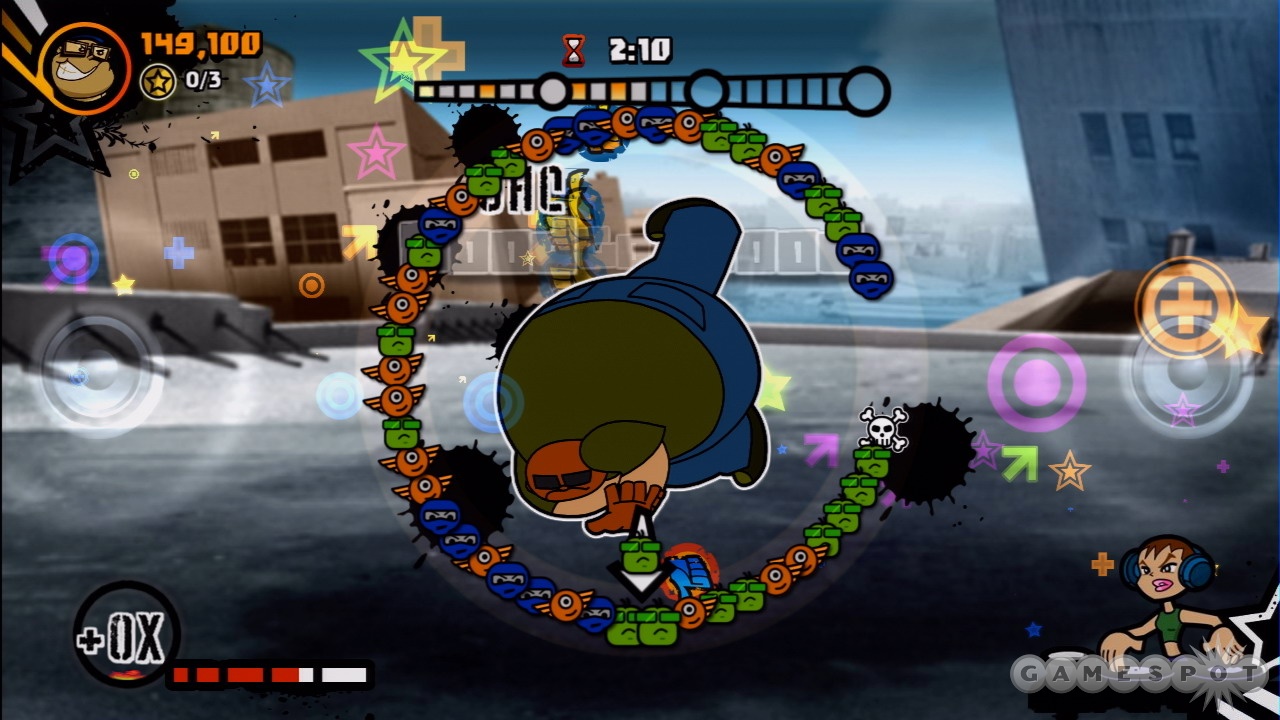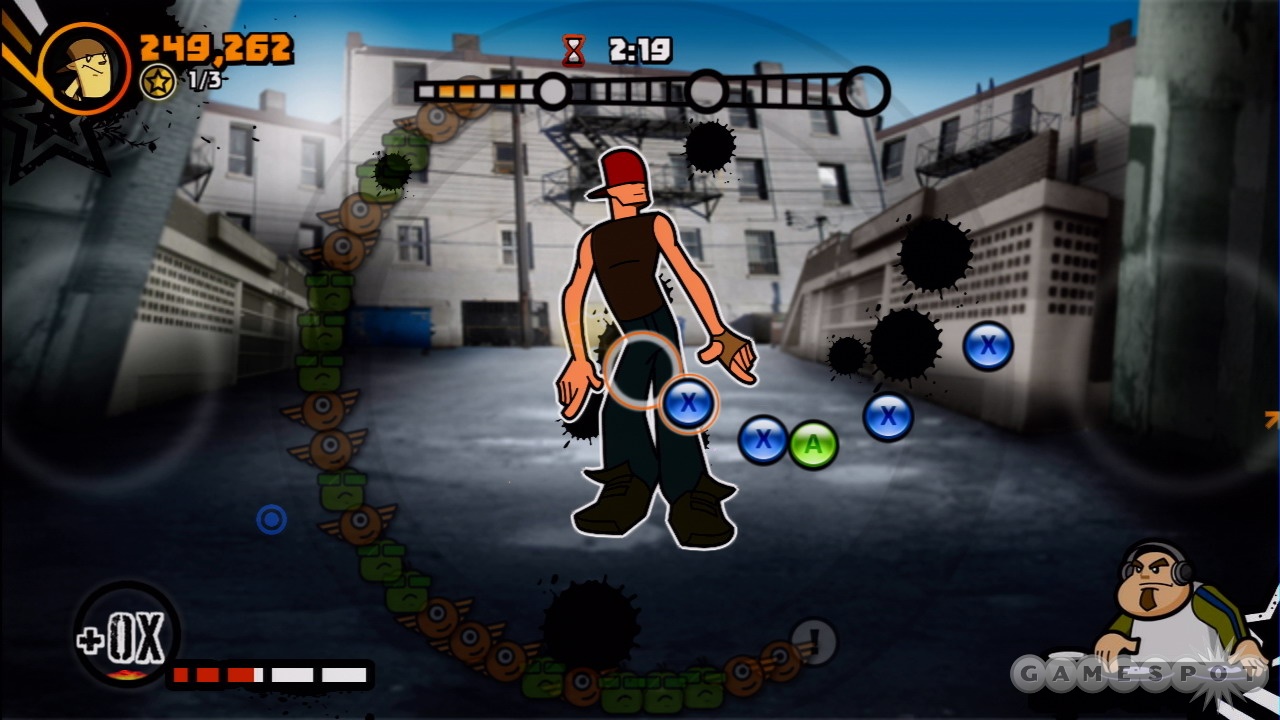When Puzzle Quest came out more than a year ago, people weren't sure how well a role-playing game would blend with a puzzle game. It sounded like a strange idea, but the mixture was delightful. Looking to bank on that same improbable success is Go Go Break Steady, a rhythm- and puzzle-game hybrid. Although the genre blend isn't as seamless as Puzzle Quest's, and the rhythm gameplay isn't as tight as it should be, the two components work well enough together to provide an interesting and sometimes enjoyable experience.

The game plays like a mix between a rhythm game such as Dance Dance Revolution and a puzzle game such as Zuma. Rather than playing both types of games at the same time, you'll alternate between each component. Each stage has a different song, and you need to finish the puzzle before the song ends to move on to the next stage. The puzzle consists of a ring of beatniks--which are this game's version of Zuma's marbles--that must be eliminated by matching three of the same color. The two gameplay components complement one another nicely. How well you play the rhythm game will determine how quickly you move through the puzzle; matching the button presses perfectly will net you a few extra beatniks to use in the puzzle, but if you mess up at all, you get only one.
It's an interesting blend of gameplay, but a few things keep it from gelling. For starters, the rhythm game feels off. Unlike in many rhythm-based music games, a button press does not correspond with a note in the music; rather, each press is a tap, buzz, or some other odd sound that plays on top of the track, which results in an out-of-sync feeling. Second, the timing for each press is a little unforgiving considering that your success in the puzzle game is dependent on your success in the rhythm game. The beads start off crawling in from the side, but they eventually snake and swirl in from all directions. The music portions are challenging, sometimes unfairly so, and they may turn off casual puzzle-game players.
The single-player option includes a tournament mode with 30 levels, a challenge mode that lets you pick the song and difficulty, and an endurance mode. Aside from adding in more buttons to the rhythm strings, the single-player mode doesn't go very deep; what you see on your first game is what you get for the rest of the game. There are competitive and cooperative multiplayer modes. Co-op is frustrating because you and your partner both have to hit the beats perfectly if you ever want to win, but the game can be fun in competition. Eliminating beatniks on your ring will add more to your opponent's, so there's potential for a good back-and-forth volley depending on the skills of each player. A spray-paint power-up will crop up from time to time that obscures the other player's rhythm string and can turn the tide of a match in an instant.
Like a fresh Kangol hat and a new pair of Adidas, the break-dancing theme is loud and proud in Go Go Break Steady. The b-boy vibe certainly works with the character design and dancing animations, but everything else feels overdone and a little cheesy. During gameplay there are just too many things on the screen. There's a DJ scratching beats in the corner, a ring of multicolored beatniks in the center, a rhythm string sliding in from all angles, tons of colorful effects bursting from the rhythm strings, and all of this sits on top of a 2D break-dancing character. The overwhelming visuals can make it hard to place puzzle pieces in the right spot or concentrate on the right button presses.

You would hope that a game with a break-dancing theme would have some great music, but unfortunately most of the tracks in Go Go Break Steady are unrecognizable beats that sound like the background music to a fast-food commercial. They might be good to break dance to, but for a rhythm game, they're boring.
Both rhythm and puzzle games have found mainstream audiences on their own, so it would seem that a game that combines the two would have mass appeal, but that's not the case with Go Go Break Steady. Those with an affinity for break dancing and genre blending might find some entertainment here, but it's hard to justify spending $10 on an unspectacular blend when the same money can get you a solid stand-alone puzzle or rhythm game elsewhere.